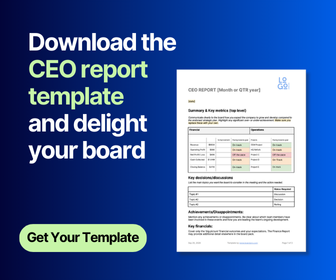How to Get Your Board 'Onboard' and Aligned
Creating and sustaining an engaged and motivated group of individuals is critical in any business context. The boardroom must be considered the same.
What is often the case is we expect board members to show up, but what we get are human beings. Human beings who are very smart, used to being in charge, and leading other humans. When placed in the context of the boardroom, board dynamics and internal politics naturally emerge. These are unique to the boardroom, but not unique across all boards.
It takes a special toolkit to work effectively with and leverage value from the individuals who make up the board of directors while minimising the impacts of negative board dynamics and politics. It also takes a special leader to utilise this toolkit consistently; preferably proactively, yet sometimes reactively.
Integrating, activating and motivating board members effectively and efficiently is much easier through the appreciation and use of people-first principles and a purpose focused board. As a complement to the webinar ‘How to Get Your Board ‘Onboard’ and Aligned’, this white paper shares smart and practical techniques that all boards can introduce to create and maintain an engaged, empowered and energised board.
Start with Why
Any team that wishes to be effective must begin with a purpose, i.e. something to achieve; a reason for being. This is vital as it provides guidance for the decisions made across the IntegrateActivate-Motivate approach – because you will have something to ‘align’ with – and it lets the board know what success looks like, providing a measuring point for their effectiveness.
This topic is beyond the scope of this particular white paper; the webinar and white paper ‘Creating and Sustaining a High-Performance Board’ provide guidance on how to define your board’s purpose and build a supporting infrastructure using the four pillars of board effectiveness.
In addition, a clear purpose ensures that the people who do end up around the board table are doing so for the same reason as everyone else: everyone is working towards the same outcome(s).
Once a new board candidate is on the board, the first step is to quickly integrate them to start delivering value to the board and organisation.
Integrate
Integration ensures that the board member develops a broad understanding of the board and organisation, is clear on how the board does its work, its norms and culture, and what the board member is there for. There are three simple methods to achieve this:
1. A rigorous onboarding/induction programme
This is a comprehensive set of steps introducing the new board member to the board and organisation. It must be fit for purpose to the board and organisation and can include:
- Providing the board member with access to past board meeting documents (agendas, minutes and accompanying material)
- Providing time with key personnel, like the CEO and senior managers
- Access to the board charter and suite of policies and procedures
- Conversations with other board members, either online, by phone, or in person.
- Reviewing strategy documentation, reports, and other information that informed the organisation’s strategy
- An in-depth conversation with the chair regarding their leadership, board performance, and other sensitive yet critical areas of the board.
2. Give them a lifeline - a board buddy and connection with the chair
A new company. A new group. A new role. A new corporate language. It’s quite overwhelming being a new board member. Assigning a board newbie with an existing, experienced fellow board member can help accelerate the new director’s learning curve, supporting them to feel comfortable contributing and adding value. It’s also handy for them to have someone to go to for an explanation of the various acronyms peppered throughout the board papers and for a quick low-down on the context of a topic or issue being discussed. This is why having a ‘board buddy’ is valuable for a new board member.
At this stage, the chair has an opportunity to bond with the new board member as well, to really get to know and understand them and their broader existence, such as other commitments, health, family challenges, and career satisfaction. These factors impact the performance and quality of the work we can do as board members.
The best chairs invest time and energy in actively considering, recognising and engaging with each individual board member. They work towards understanding how each board member is best motivated and engaged, and how this translates to the board as a collective; not only when they join the board, but as an ongoing exercise too.
What do the board members need individually and collectively to bring their best selves to the boardroom and do their best work as board members?
3. Clear expectations
Position descriptions are becoming a common feature of governance. They provide a place for specifying the expectations of each board member, for each role that exists on the board (e.g. the board chair or treasurer), and for the board committees (for example, chair of the audit committee).
Articulating the expectations of each board and committee member helps to avoid many issues that plague boards (e.g. underperforming board members) and positively work towards engaging and activating board members; they will know what to do and when to do it, and you will be able to provide the tools for the job.
Activate
A great deal of work goes into finding, interviewing, appointing and integrating great new board members. Now that you have them, it’s time to ‘turn them on’. And the faster the new board member can deliver value to the board and organisation, the better. There are three techniques that will work towards this outcome:
1. Leverage their expertise
Skills-based boards have become a common feature of good corporate governance, and it’s likely how your board has been built. Now that you have integrated the expertise you were seeking, unleash that knowledge towards the outcomes you require. Boards often do this through:
- Committee(s): positioning the expertise where it’s logically needed and valued
- Portfolio role(s): allocating the board member to a section of the business/ board (referred to as a ‘portfolio’) where they have a deeper understanding and involvement. This may involve closer working with staff inside the organisation, or specific guidance to the CEO
- Specific ‘advice’ to the board: inviting the board member to provide in-depth information or recommendations to the board
- Internal conversations with CEO and/or staff: inviting the board member to provide an expert view on their area of expertise to the CEO and/or relevant staff.
2. Ask them how they work
Engage the board member in setting how the board does its work. Leveraging a fresh set of eyes to provide input on how the board does its work, with the aim of being an efficient and effective board, is a valuable opportunity for the board and the new board member. In addition, invite the board member to share how they do their best work and what tools they might need.
3. Invite them out
Providing invitations to attend events as a board representative is a simple activating (and integrating and motivating) tool. Invite the board members to attend events that involve the organisation either with clients/ customers, employees, or simply as a representative of the organisation. Sharing the load across all board members will ensure everyone feels involved and recognised.
Motivate
All of us have a personal way of becoming motivated. Some require a high-touch approach where we’re frequently communicated with, encouraged and involved. Some need a clear set of instructions, the right tools and being left alone to get a job done. Some are like Tony Robbins, and some prefer a more subtle mode of encouragement.
1. Know the board members
Great chairs know and understand what motivates each of their team members. During the integrating phase – the induction programme – the chair would benefit from understanding how the new board member is best motivated. Great board members know themselves well and can communicate this information to their chair. It may seem overly simplistic; however, slight changes in how each board member is approached can mean a significant difference in the output of each board member and the board as a whole.
Ongoing communication between board members and the chair at appropriate intervals (not just once a year during the board review) helps to keep the board members engaged and the information about each board member fresh. This enables better management and leadership of the board. Some board members will be forthcoming with their communication requirements, whereas some are more reserved and may need prompting.
2. Date the board
Initiating board engagement away from meetings can be extremely valuable to aa collaborative board. These moments of connection where the board can be together and NOT do board work help to build deeper connections between the board members, particularly when it comes to understanding each director’s underlying motivations and ways of thinking. It will enable them to understand how to work better with each other and together as a cohesive team. It will build trust, thereby supporting beneficial friction and constructive debate in the boardroom.
Simple ways to do this are having board lunches/dinners before or after board meetings, and/or engaging with a board buddy and/or the chair between meetings. If possible, travelling together provides the opportunity for valuable conversations as well.
3. Recognise and celebrate organisational successes
The board plays a significant part in the organisation’s success, yet often spends its time on what can go wrong, what has gone wrong, and making decisions to avoid or correct problems. It is a great amount of work for little recognition. Making a point of celebrating successes will make all of the hard work and difficult decisions feel worth it. It will help the board members to feel motivated, integrated with the organisation, and know that they were leveraged in the appropriate areas.
If you're looking for a tool to streamline your Board processes, check out BoardPro - an all-in-one software solution designed specifically for Boards and busy CEOs!
Schedule a demo with our team today and begin to experience a whole new way of meeting.
Share this
You May Also Like
These Related Stories
%20(1).png)
How to Onboard New Board Members

10 Keys To Network Your Way to Your Next Board Position



